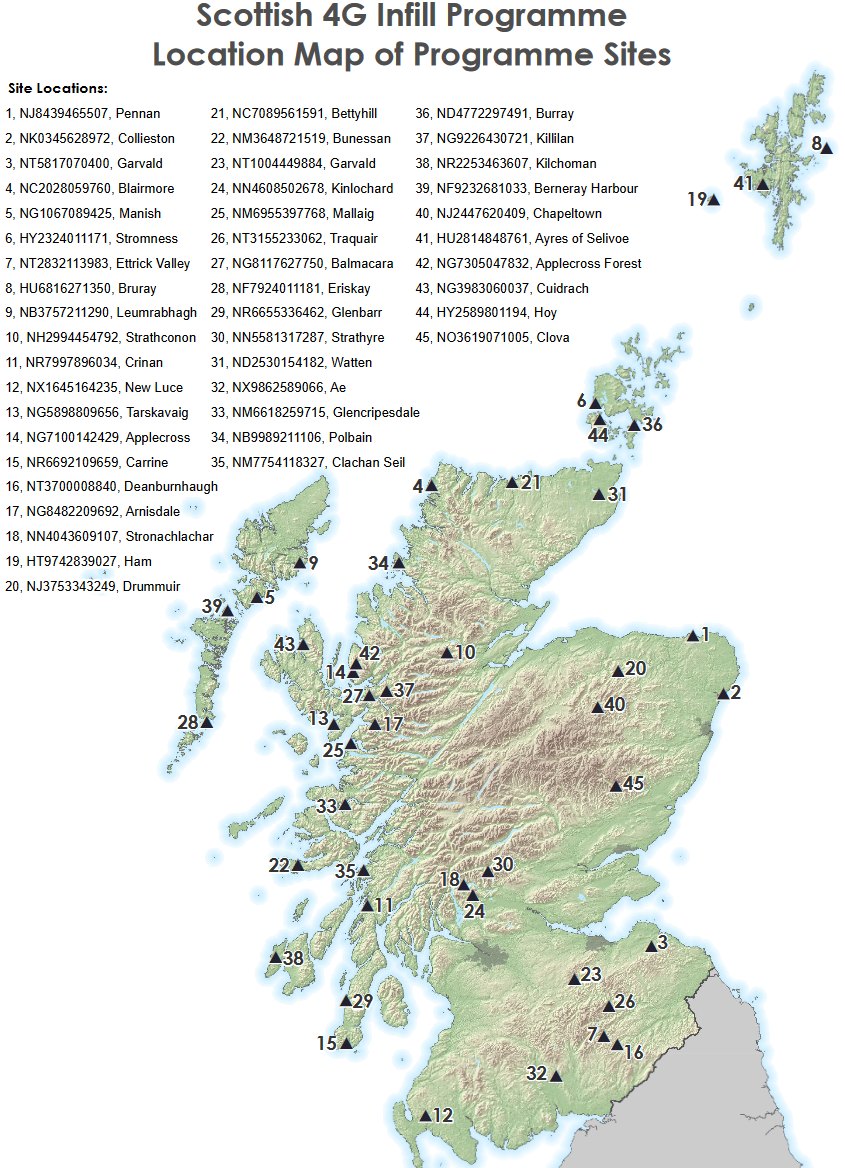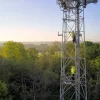UK Mobile Operators Blamed for Scotland’s Slow 4G Infill Scheme UPDATE

The Scottish Government‘s £25m 4G Infill Programme, which began in March 2018 and aims to improve rural mobile coverage (mostly across the Highlands and Islands region) by building a network of 45 new masts (here), has so far not built any new sites and only 3 are expected to begin construction in the “very near future.”
The majority of this programme, which is supported by supplier WHP Telecoms, is intended to focus upon remote rural areas that are completely without coverage. Under this approach the public funding would be used to help build new masts, which mobile operators (Three UK, Vodafone, EE (BT) and O2) would then be encouraged to utilise by deploying 4G (mobile broadband) services.
According to the original plan, construction was supposed to start toward the end of 2018 and then run for 4 years until 2022. However a meeting of the Scottish Parliament’s Rural Economy and Connectivity Committee this week revealed that, so far, no new masts have completed their construction and only 3 sites a due to be finished in the “very near future” (none were named).
Advertisement
The Scottish Government’s Minister for Connectivity and the Islands, Paul Wheelhouse, put the blame for this squarely at the feet of mobile operators. “The biggest challenge is trying to attract interest from mobile operators to actually utilise the masts,” said Paul without elaborating on the reasons why operators might not be engaging. Sadly the mobile operators themselves are being similarly coy.
A Spokesperson for Mobile UK told ISPreview.co.uk:
“The mobile industry is fully engaged with the Scottish Government and the Scottish Futures Trust about how to work the 4G infill programme alongside the recently announced Shared Rural Network to extend coverage into the remoter rural areas of Scotland.
The Shared Rural Network is a £1 billion joint initiative backed with both public and private investment and represents a step-change in rural coverage, not only in Scotland but in all areas of the country. We see our close work with the Scottish Government as an integral part of this programme.”
We can’t help but feel that this programme has shades of the UK Government’s somewhat failed £150m Mobile Infrastructure Project, which set out with similarly grand ambitions to improve mobile coverage in rural notspots but only ended up building 75 of the promised 575 masts (here).
The MIP became bogged down by a mix of problems, from delays in getting planning permission (some communities were unhappy and protested), to challenges with securing wayleave agreements via many different landowners and the inherent difficulty of getting both a good power supply and backhaul capacity to such remote locations.
Consultations are currently underway to make the planning side of such deployments easier (we await the final outcome of that) and, going forward, the Scottish Government said they expected some degree of collaboration with the new £1bn Shared Rural Network (SRN); in theory this should complement their programme. We will update this article if Mobile UK ever sees fit to furnish us with their side of the story.
Advertisement

UPDATE 1st November 2019
We’ve added a comment from Mobile UK, the industry trade body, above.
Mark is a professional technology writer, IT consultant and computer engineer from Dorset (England), he also founded ISPreview in 1999 and enjoys analysing the latest telecoms and broadband developments. Find me on X (Twitter), Mastodon, Facebook, BlueSky, Threads.net and Linkedin.
« BT FTTP and G.fast Broadband Cover Tops 4.2 Million UK Premises





















































Comments are closed